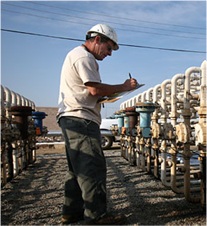
Operating large trucks and other heavy-duty vehicles for the transport of materials can be a dangerous job. With many in this sector out on the roads alone, who’s sending help to your team when an incident occurs? Is roadside assistance enough?
Remember, to get the job done, your employees work long hours - often in high-risk environments that requires the utmost attention to detail.
Here we explore some of the most dangerous driving scenarios facing your employees and how you can ensure their safety, regardless of location.
Driving Against the Clock ... It’s Difficult to Stay Alert
Lone drivers often travel for long periods of time on unpredictable terrain, risk fatigue or potentially fall asleep behind the wheel. Your other teams may be responsible for operating large equipment, transferring and shipping products to the public-facing environments, which requires a high degree of alertness.
From crude oil haulers to warehouse personnel, you are responsible for the safety and well being of all of your employees who may be susceptible to accidents, health events and interaction with the public.
You need to ensure the right safety measures are taken to protect your most valuable asset—your employees—when they are facing their most dangerous situations.
Hazards Drivers Face on the Road
Regardless of where an employee is driving—whether it’s on a long stretch of highway, up a mountain or between sites—drivers of all types of transportation and transit vehicles can be challenged by heavy loads, inclement weather, other drivers and unpredictable members of the public.
Let’s take a deeper dive into a few industries with risky travel situations:
- Transportation: This sector can pose many risks, with employees responsible for delivering goods and services to the public. Long shifts and physically challenging duties—like heavy lifting and hazardous working environments—contribute to employee fatigue. The U.S. Department of Transportation reported fatalities rose to nearly 4,000 in 2013, including truckers, occupants in vehicles that collided with large transport trucks and pedestrians. More than 32,000 highway deaths for all types of vehicles were also reported the same year.
- Government: All layers of government deliver a broad range of public services including transportation and transit. Your teams often work in public-facing environments, facilitating transit services and risk run-ins with unstable or injured civilians. In June 2013, the Bureau of Labor Statistics (BLS) in the United States reported almost 6,000 state and local government transit and intercity bus drivers were injured at work. Incidents occur that put many workers on disability, sometimes short-term and, in many cases, for life.
- Natural Resources: Forestry is a risky business to work in. Long-haul logging professionals are not only responsible for transporting massive loads—they are often required to drive on remote, dirt roads that are not easily accessible. According to Centers for Disease Control and Prevention (CDC), logging has been one of the most hazardous industries in the United States year over year. In 2010, the logging industry employed nearly 100,000 workers and accounted for 70 deaths. The CDC reports the excessive risk for fatal work injuries emphasize a need to prioritize research and intervention programs to make this industry less hazardous.
Contact Blackridge Solutions to find out which work alone safety solution best fits your organizations requirements.





 RSS Feed
RSS Feed